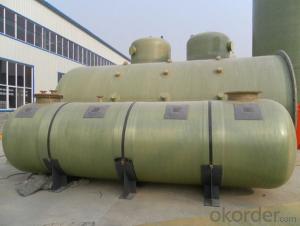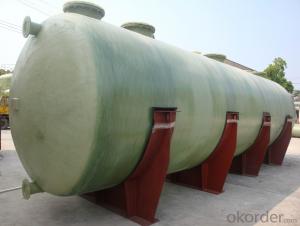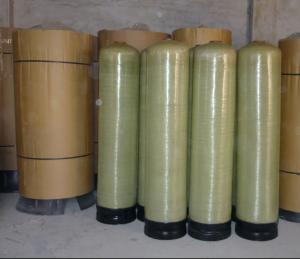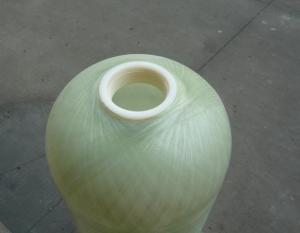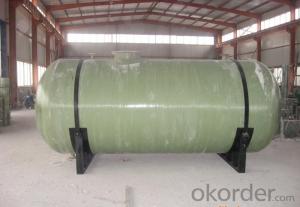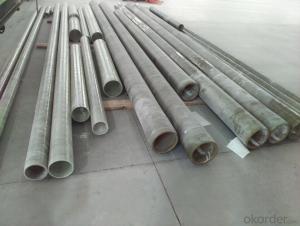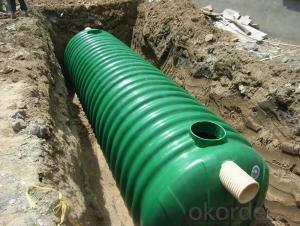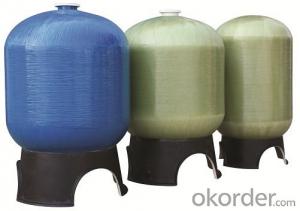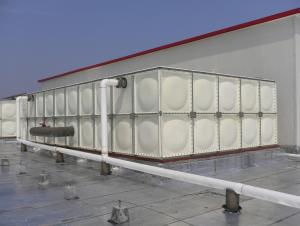FRP Tanks Fiberglass Reinforced Plastic Tank Hydrochloric Acid Tank
- Loading Port:
- Lianyungang
- Payment Terms:
- TT OR LC
- Min Order Qty:
- 2 pc
- Supply Capability:
- 100 pc/month
OKorder Service Pledge
OKorder Financial Service
You Might Also Like
China National Building Material (Group) Corporation (CNBM) large on-the-spot filament winding FRP tank adopted the large scale on-site vertical design and overall suit equipment and technology which were imported from U.S. TANK INETICS Company which reached the international advanced standard of 1990s. The large FRP container took heat-cured resin as its main component and glass-fiber as its reinforced-material, while adopted double filament mouth to screw-wind and circular-wind with excellent physical property and corrosion resistance, expedient installation and without the need to maintenance, flexible design and rational wall structure.
Specification of FRP Tanks:
Diameter: 4m-25m, Capacity: 100m3-6000m3
Appearance design: vertical storage tank, horizontal winding tank, transportation tank, reaction tank;
Uses: Hydrochloric acid tank, pressure tank, anti-corrosion tank, glass fiber reinforced plastic tank, soy sauce anti-corrosion tank, glass fiber reinforced plastic tank, soy sauce tank.
FRP tank: the use of resin as adhesive, glass fiber reinforced plastic fiber as reinforcing agent.
Physical characteristics: the proportion of glass steel is usually 1.8-2.1, 1/4-1/5, steel, cast iron and plastic than the strength are high. The coefficient of thermal expansion of glass steel and steel is roughly equal, and the heat transfer coefficient is only 0.5% of steel.
The characteristics of FRP tanks:
1, light weight, high strength: relative density between 1.5 and 2.0, only carbon steel 1 / 4 to 1 / 5, but the tensile strength is close to or even more than carbon steel, and specific strength can compared with high-grade alloy steel.
2, good corrosion resistance: the atmosphere, water and the general concentration of acid, alkali, salt, and a variety of oils and solvents have better resistance.
3, excellent electrical properties: can be used to manufacture the insulator.
4, excellent thermal performance: the low thermal conductivity of glass steel, at room temperature for 1.25~1.67kJ/ (M - H - K), only the metal 1/100~1/1000, is an excellent thermal insulation material.
5, excellent technology: according to the shape of the product, technical requirements, the use of flexible selection of molding process; process is simple, can be a one-time molding, economic effect is outstanding.
Application range of FRP tanks :
Medium application:
1, hydrochloric acid, sulfuric acid, phosphoric acid, nitric acid, organic acid, hydrofluoric acid, fluoride, saline, sewage etc.;
2, food grade (vinegar, soy sauce, water, etc.);
3, polyvinyl chloride (FRP/PVC), polypropylene (FRP/PP), etc..
Industry application of FRP Tanks
FRP tanks are widely used in chemical, petroleum, manufacturing: paper, food, electronics, pharmaceutical, packaging, transportation and other fields.
Pictures of FRP tanks:
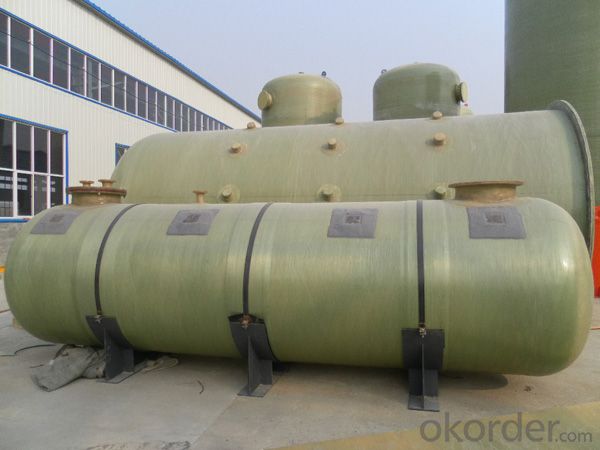
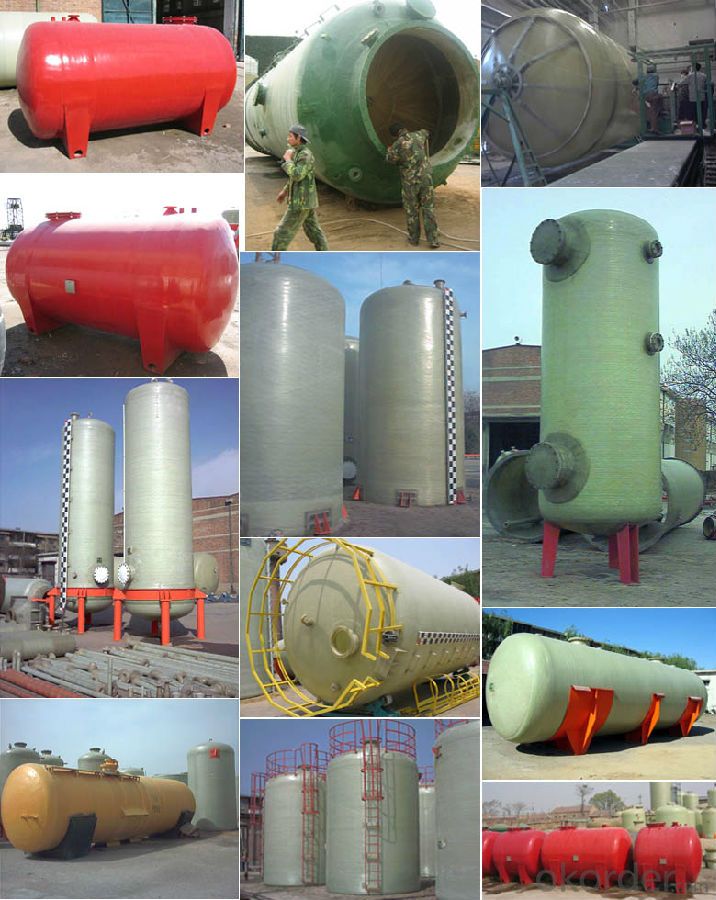
RFQ of FRP tanks:
Q: What is fiberglass composite?
A: Fiberglass composite is a laminate made from glass fibers or filaments and thermosetting resin. It is commonly known as RTRP, RTMP, FRP, GRP, GRE and GRV.
Q: Are fiberglass tanks fragile?
A: Due to the elastic nature of the resin which holds the clothlike glass fibers together, fiberglass is strong and flexible. FPI products meet the rigorous "Impact Test" requirements of the international standard e.g. BS, API, ...
Q: Are fiberglass tanks an 'off the shelf' item?
A: No. FPI's fiberglass pipes are bespoke products engineered to the highest international standards and specifications.
- Q:What are the maintenance methods of FRP tanks?
- Winding forming, winding and winding with resin glass winding machine.
- Q:What are the technical standards for FRP tanks?
- The resin content in the inner layer, the surface layer and the inner layer of the cylinder varies according to the storage medium.
- Q:What should we pay attention to when installing FRP tank for hydrochloric acid?
- When the liquid inlet of the hydrochloric acid tank is higher than the bottom of the tank, the inlet shall be bent towards the tank wall so that the liquid enters the tank wall and reduces the impact on the bottom. If the liquid level of the hydrochloric acid tank can not be controlled, the overflow port shall be installed on the hydrochloric acid tank to prevent the spillage of liquid and cause unnecessary harm.
- Q:What material for liquid storage tank
- Liquid tank liquid alkali storage tank according to the types of polyethylene material storage tank, steel lined with polyethylene material tank two series.
- Q:What are the manufacturers of glass fibre reinforced plastic storage tanks in Guangdong?
- Guangzhou Jing Hui glass fiber reinforced plastics Co., Ltd. is a large glass fiber reinforced plastic production enterprise in Southern China. It has been established for nearly 60 years and has complete facilities.
- Q:How much is a 20 cubic meter of steel storage tank?
- A 20 cubic GRP storage tank is probably between 23000~30000, which is general and has no special requirement. I suggest you go to central chemical to see, their prices are also affordable, I have bought several times in them, but also.
- Q:Can FRP withstand 15% of sulfuric acid and nitric acid mixture?
- Yes. GRP is not made of steel. It is commonly called glass fiber reinforced plasticFRP (Fiber, Reinforced, Plastics), that is, fiber reinforced plastics, generally refers to the use of glass fiber reinforced unsaturated polyester, epoxy resin and phenolic resin matrix
- Q:What kind of resin is used to make FRP tanks containing nitric acid?
- Nitric acid is not stable, light or heat will decompose and release of nitrogen dioxide, nitrogen dioxide produced by decomposition of soluble in nitric acid, so that the appearance of a yellowish brown bottle, should be in the shadows to avoid light preservation, can also be saved in the outer frosted plastic bottle (not recommended), is strictly prohibited contact with the agent.
- Q:Why leakage occurs during the use of FRP tanks?
- In general, there may be two possibilities, namely, bad production and nonstandard use
- Q:The production process of FRP tanks
- At present, the world's most used glass steel storage tank production methods have the following four kinds.Hand paste method: the main use countries are Norway, Japan, Britain, Denmark and so on.Jet method: the main use countries are Sweden, the United States, Norway and so on.Molding method: the main use countries, such as germany.RTM method (resin transfer molding): the main use countries are Europe and the United States, japan.
1. Manufacturer Overview |
|
|---|---|
| Location | |
| Year Established | |
| Annual Output Value | |
| Main Markets | |
| Company Certifications | |
2. Manufacturer Certificates |
|
|---|---|
| a) Certification Name | |
| Range | |
| Reference | |
| Validity Period | |
3. Manufacturer Capability |
|
|---|---|
| a)Trade Capacity | |
| Nearest Port | |
| Export Percentage | |
| No.of Employees in Trade Department | |
| Language Spoken: | |
| b)Factory Information | |
| Factory Size: | |
| No. of Production Lines | |
| Contract Manufacturing | |
| Product Price Range | |
Send your message to us
FRP Tanks Fiberglass Reinforced Plastic Tank Hydrochloric Acid Tank
- Loading Port:
- Lianyungang
- Payment Terms:
- TT OR LC
- Min Order Qty:
- 2 pc
- Supply Capability:
- 100 pc/month
OKorder Service Pledge
OKorder Financial Service
Similar products
New products
Hot products
Related keywords

